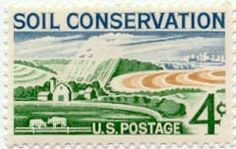Neonicotinoid are the most commonly used class of insecticides. Between 2005 and 2010 neonicotinoid use in the USA and UK more than doubled. Anecdotal evidence suggests similar trends exist in New Zealand, where neonicotinoid seed coatings are now often applied prophylactically in contravention of the principles of Integrated Pest Management. This widespread use of neonicotinoid insecticides is controversial due to a lack of understanding about their persistence in the environment and the long-term consequences of their use. We present a novel, simple, low-cost method for the extraction and quantification of five neonicotinoids from soil with a detection limit <1 ng g-1. We have applied this method to soil collected from maize paddocks in New Zealand and found clothianidin and imidacloprid in 48 out of 50 samples. Neonicotinoid concentrations ranged from 0.5 to 9.4 ng g wet weight -1 imidacloprid and 2.1 to 26.7 ng g wet weight -1 clothianidin. These concentrations are likely to be hazardous to non-target organisms exposed to them.
Source:
Chris Pook and Iana Gritcan (2017) PeerJ Preprints | https://doi.org/10.7287/peerj.preprints.2919v1

- Login om te reageren
